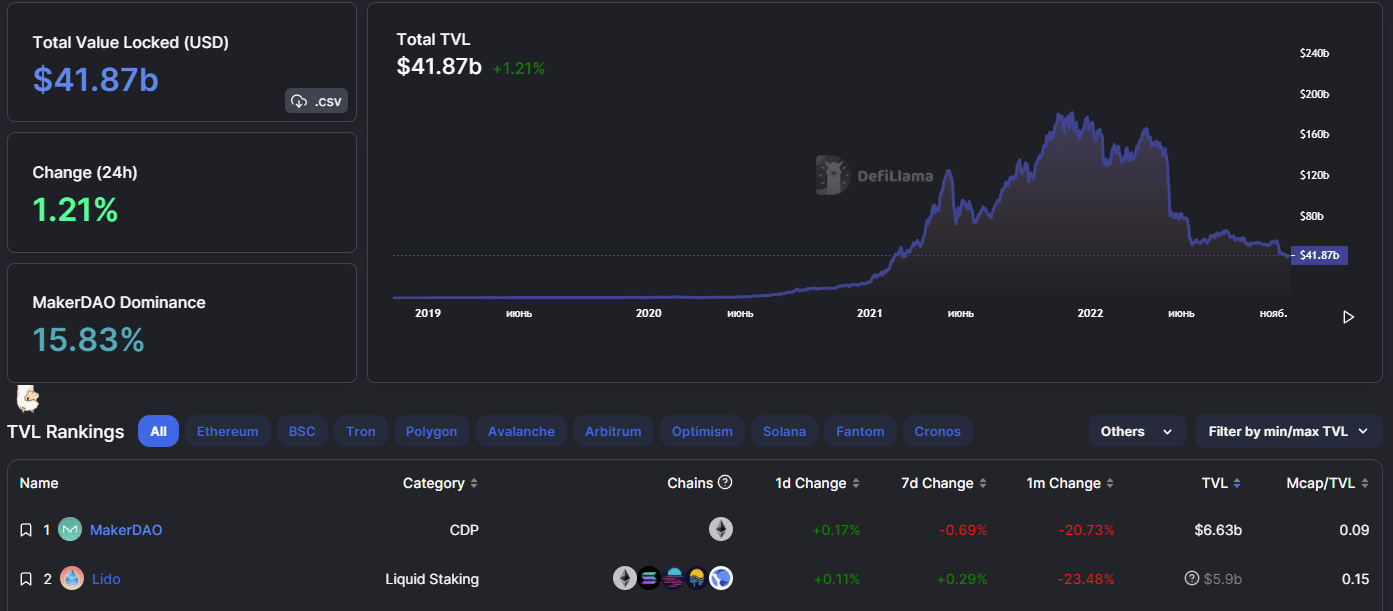Whole DeFi Industry Dominated by Just Two Applications

DeFi, or decentralized finance, is a blockchain-based alternative to traditional financial solutions, including banking, exchange, funding and so on. However, the state DeFi is in right now raises a lot of questions about the future of the industry.
Lack of competition
According to DefiLIama’s data, the difference between the second and the third biggest protocol on the network amounts to more than $2 billion; between the first and the third place — almost $3 billion.

The first place is held by the biggest decentralized stable currency, DAO. However, the protocol’s TVL did not reach such a high number only because of the decentralized stable currency. More than 400 applications and services integrated the decentralized stablecoin, which is the primary reason behind the massive $6.63 billion TVL.
The second place on the DeFi market is held by Lido Finance, a protocol we have covered numerous times. Lido Finance allows users to increase the liquidity of their staked assets by exchanging cryptocurrencies like ETH to stETH tokens. Since the coin lock period for Ethereum remains undisclosed, investors choose Lido to have the ability to manage their ETH while it remains in staking.
Main downsides of DeFi
Despite the aforementioned projects’ dominance on the market, it is hard to call them centralized or dangerous for the stability of the decentralized finance industry. However, the lack of competitors for projects like Lido Finance creates certain risks for retail users.
Previously, industry experts expressed their concerns over Lido’s token issuance scheme. Practically, Lido holds real Ethereum in exchange for self-issued tokens that have been constantly losing their peg to ETH. In the case of a spike in downward volatility, users might face issues with stETH’s liquidity and lose a lot of the exchange value.






 Bitcoin
Bitcoin  Ethereum
Ethereum  Tether
Tether  USDC
USDC  TRON
TRON  Dogecoin
Dogecoin  Cardano
Cardano  Bitcoin Cash
Bitcoin Cash  Chainlink
Chainlink  LEO Token
LEO Token  Stellar
Stellar  Litecoin
Litecoin  Hedera
Hedera  Monero
Monero  Dai
Dai  OKB
OKB  Cronos
Cronos  Ethereum Classic
Ethereum Classic  Gate
Gate  Cosmos Hub
Cosmos Hub  VeChain
VeChain  Algorand
Algorand  KuCoin
KuCoin  Stacks
Stacks  Tether Gold
Tether Gold  Theta Network
Theta Network  Zcash
Zcash  IOTA
IOTA  Tezos
Tezos  TrueUSD
TrueUSD  NEO
NEO  Polygon
Polygon  Decred
Decred  Dash
Dash  Ravencoin
Ravencoin  Zilliqa
Zilliqa  Qtum
Qtum  Synthetix Network
Synthetix Network  Basic Attention
Basic Attention  0x Protocol
0x Protocol  Siacoin
Siacoin  Holo
Holo  DigiByte
DigiByte  Nano
Nano  Enjin Coin
Enjin Coin  Status
Status  Ontology
Ontology  Waves
Waves  Hive
Hive  Lisk
Lisk  Pax Dollar
Pax Dollar  Steem
Steem  BUSD
BUSD  Numeraire
Numeraire  NEM
NEM  Huobi
Huobi  OMG Network
OMG Network  Bitcoin Gold
Bitcoin Gold  Ren
Ren  Augur
Augur  Bitcoin Diamond
Bitcoin Diamond